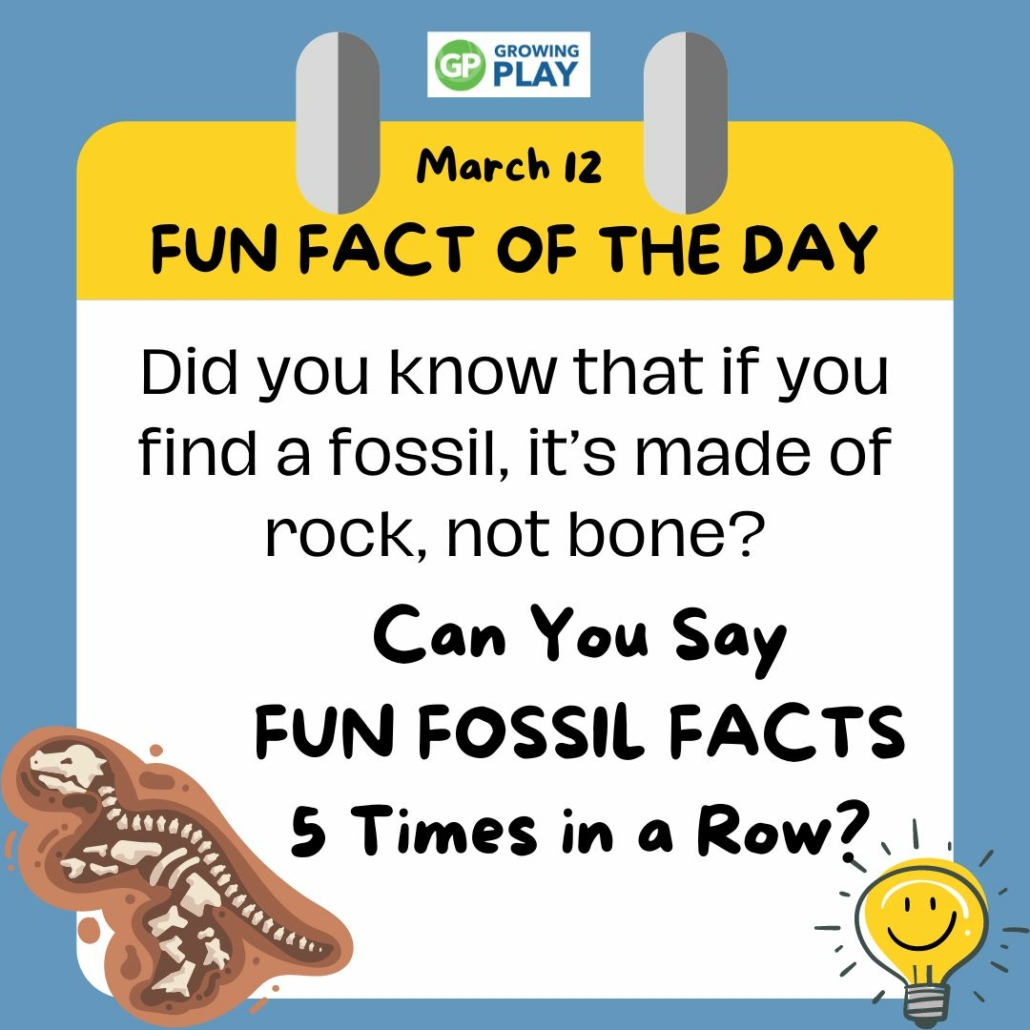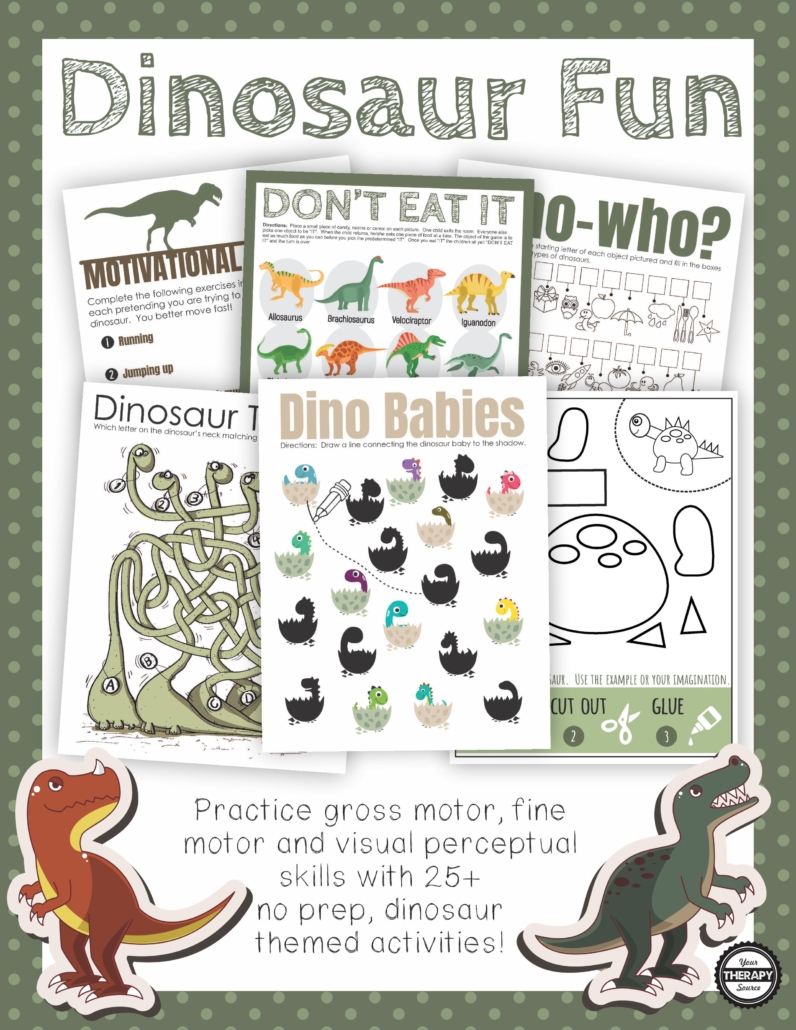March 12 – Fun Fossil Facts for Kids

Wow – can you say that 10x fast: “Fun Fossil Facts, Fun Fossil Facts,…”. Today, March 12, is a perfect day to learn more about the fascinating world of the past! Fossils, the preserved remains of ancient life, offer a window into Earth’s history and the evolution of life on our planet. Exploring fossils helps us understand the creatures that lived long before us, some of which are ancestors of modern animals, while others have no living descendants. Learn more about the past with our exciting fossil facts for kids, activities, and questions. You can check out all of the Fact of the Day for Kids here.
FIFTEEN FOSSIL FACTS FOR KIDS
- Fossils are the preserved remains or traces of animals, plants, and other organisms from the remote past.
- The process of fossilization can include mineral replacement, where the original material of the organism is replaced with minerals, creating a rock-like model of the organism.
- The oldest known fossils are about 3.5 billion years old, showing evidence of early life forms on Earth.
- Dinosaurs are one of the most famous groups of fossils, but fossils can also be of plants, bacteria, footprints, and even animal droppings!
- The study of fossils, paleontology, helps scientists understand the history of life on Earth and how it has changed over time.
- There are two main types of fossils: body fossils, which are parts of the organism such as bones or teeth, and trace fossils, like footprints or burrows, that show evidence of the organism’s behavior.
- The La Brea Tar Pits in Los Angeles is one of the most famous fossil sites, where thousands of fossils from the Ice Age have been found.
- Fossils can tell us a lot about an animal’s diet, behavior, and environment at the time it lived.
- The Jurassic Period is a time in Earth’s history known for having a lot of dinosaur fossils.
- The largest dinosaur fossil ever discovered is the Argentinosaurus, which measures over 100 feet long!
- Dinosaur footprints have provided scientists with valuable information about the behavior and movement of these ancient creatures. Some sites have tracks so well-preserved that they show the texture of the dinosaurs’ skin, giving clues about their lives that bones alone cannot reveal.
- The sedimentary rock layers of the Earth act like pages in a book, with each layer representing a different period in time. Fossils found in these layers help scientists understand the sequence of life on Earth, as the deeper the layer, the older the fossils it contains.
- English paleontologist Richard Owen was the first to coin the term “dinosaur,” which means “terrible lizard” in Greek. His work in the mid-19th century laid the foundation for modern paleontology by establishing dinosaurs as a distinct group of prehistoric reptiles.
- The Tyrannosaurus Rex, one of the most well-known dinosaurs, has fascinated people for generations. Yet, it’s the discovery of its soft tissues, like proteins and blood vessels, in fossilized bones that has provided unprecedented insights into the biology of these ancient giants.
- The American Museum of Natural History in New York houses one of the largest collections of fossils in the world. Among its treasures is the fossil of a bone from a sauropod dinosaur, believed to be one of the largest single fossils ever discovered, showcasing the immense size these creatures could grow to.

Dinosaur Puzzles and Games for Kids
ACTIVITY IDEAS TO CELEBRATE FOSSILS
Discover the ancient world beneath our feet with these engaging classroom activities:
- Complete this Fossil Word Search Puzzle
- Create your own “fossils” using clay and plaster of Paris.
- Go on a fossil hunt around the schoolyard, looking for rocks that might contain ancient secrets.
- Draw your favorite dinosaur or prehistoric animal based on fossil evidence.
- Build a mini-museum display with pictures and facts about different fossils.
- Use sand, water, and small objects to simulate how fossils are formed over time.
QUESTIONS TO THINK – FOSSIL FACTS FOR KIDS
Let’s dig deeper into the world of fossils with these thought-provoking questions:
- How do fossils help scientists understand the Earth’s history?
- Why are dinosaur fossils so fascinating to people of all ages?
- What can fossils tell us about the climate and environment of the past?
- How do paleontologists determine the age of a fossil?
- What challenges do scientists face when trying to find and study fossils?
WOULD YOU RATHER QUESTIONS ABOUT FOSSILS
Here are five questions to spark conversation. Would you rather…
- Discover a new dinosaur species or find the fossil of a woolly mammoth?
- Be a fossil hunter in the hot desert or in a dense jungle?
- Have a fossil named after you or get to name a new dinosaur species?
- Find a fossilized dinosaur egg or a complete dinosaur skeleton?
- Explore the depths of the ocean for marine fossils or the heights of the mountains for bird fossils?
MORE FUN STUFF
Here are more fun ideas to help keep the kids entertained:
- Fun Facts for Kids
- Dinosaur Facts for Kids
- Stegosaurus Facts for Kids
- Woolly Mammoth Facts for Kids
- January 30 Fun Fact of the Day for Kids
Exploring the world of fossils opens up a window to the past, revealing the remnants of dinosaur bones, the impressions of ancient plants, and the traces left by creatures that roamed the Earth long before us. Through layers of sediment and the painstaking work of scientists, we uncover clues about extinct animals, the evolution of modern birds from non-avian dinosaurs, and the vast history encapsulated in the fossil record.
These fun fossil facts, from the discovery of the largest single fossils to the detailed skin impressions of theropod dinosaurs, not only excite our imagination but also enrich our understanding of the natural world. As we learn more about this fascinating journey from a long time ago the insights of paleontology guide us. We connect with the ancient life that shaped our planet’s history, sparking curiosity and wonder in the minds of young explorers about the most common fossils to mysterious forms of life buried in the layers of the earth.


